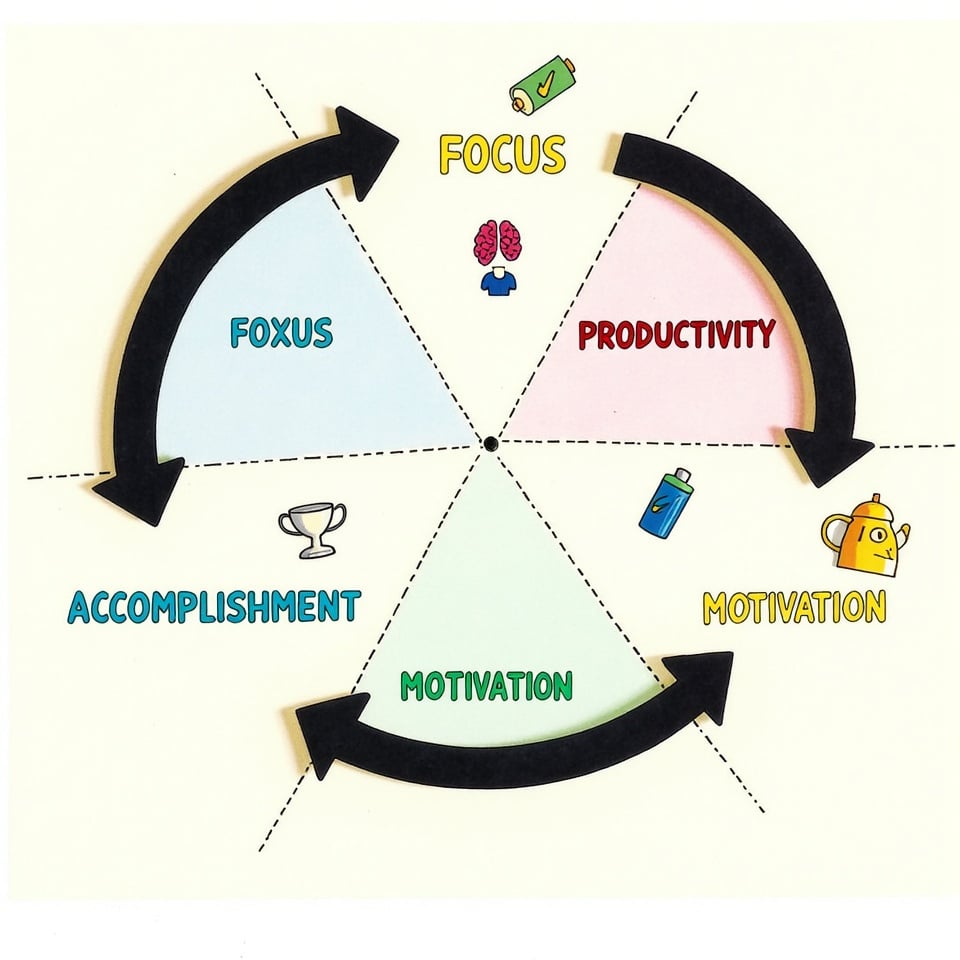Are you tired of dealing with vague action items that leave you wondering what to do next? You’re not alone.
Many professionals struggle with unclear directives that can lead to confusion and stalled projects.
But what if I told you that mastering the skill of writing clear, actionable items could dramatically enhance your team’s productivity and accountability?
By honing this essential communication technique, you’ll eliminate ambiguity and ensure everyone understands their roles.
In this article, you’ll discover practical strategies to transform your action items from fuzzy to focused, making collaboration smoother and more effective.
Let’s dive in and unlock the secrets to clear communication!
What is an Action Item?
At the heart of project management lies the action item – a specific, documented task that turns meeting discussions into concrete results.
You’ll find that action items are the building blocks of successful project execution, helping teams move from ideas to implementation seamlessly.
When you’re working with action items, you’re essentially creating a roadmap for your team’s success.
Each task needs a clear task owner who is responsible for seeing it through to completion.
They’re more than just to-do list entries; they’re commitments that emerge from productive meetings and discussions.
You’ll know you’ve written an effective action item when it clearly communicates what needs to be done, who’s doing it, and when it should be finished.
This clarity ensures everyone’s on the same page and working toward shared goals.
Benefits of Well-Written Action Items
You’ll find that well-written action items serve as powerful tools for keeping your projects organized while ensuring every team member knows their responsibilities.
When you craft clear action items, you’re setting your team up for success by creating a reliable system to track work progress and improve the productivity of your meetings.
Your team’s ability to communicate effectively will naturally improve as action items eliminate confusion about who’s doing what and when it needs to be done.
Action items help keep projects organized
When projects start to become complex, well-written action items serve as the backbone of organized project management.
They’re essential project management tools that help you maintain control and visibility over tasks, deadlines, and team responsibilities.
By implementing clear action items, you’ll create a structured framework that keeps everyone aligned and focused on project goals.
- Track progress effortlessly by monitoring task completion against established timelines
- Delegate responsibilities clearly, ensuring accountability and preventing task overlap
- Break down complex projects into manageable chunks for better resource allocation
- Maintain transparent communication channels through documented expectations and deliverables
With well-crafted action items, you’ll transform overwhelming projects into organized, achievable initiatives.
You’ll find it easier to identify bottlenecks, adjust priorities, and keep your team moving forward efficiently toward project completion.
Action items ensure team accountability
Because well-written action items clearly define responsibilities and expectations, they serve as powerful tools for maintaining team accountability.
When you document specific tasks with owners and deadlines, team members understand exactly what they’re responsible for and when deliverables are due.
Action items help create transparency and ensure everyone stays on track with their commitments.
| Accountability Element | How Action Items Help |
|---|---|
| Task Ownership | Eliminates confusion about who’s responsible |
| Timeline Management | Sets clear deadlines for deliverable completion |
| Progress Tracking | Enables easy monitoring of task status |
You’ll find that keeping team members accountable becomes much simpler when you have well-documented action items.
They provide a concrete reference point for follow-ups and help managers assess workload distribution while minimizing the risk of tasks falling through the cracks.
Action items track work progress effectively
Beyond maintaining accountability, well-written action items serve as powerful progress tracking tools that keep projects moving forward.
When you track action items effectively, you’ll gain valuable insights into your project’s health and momentum.
You’ll quickly identify bottlenecks, assess workload distribution, and make data-driven decisions about resource allocation.
- Monitor completion rates and deadlines to spot potential delays before they impact the project timeline
- Use action item status updates to generate progress reports and keep stakeholders informed
- Review historical action item data to improve future project planning and estimation
- Create visual dashboards that display action item metrics, making it easier to understand project velocity
These tracking capabilities transform your action items from simple task lists into strategic project management tools that drive success.
Action items improve meeting productivity
While meetings often get a bad rap for being time-wasters, well-crafted action items can transform them into productivity powerhouses.
When you document clear, specific tasks during meetings, you’ll establish a structured framework that keeps discussions focused and purposeful.
Action items can help ensure that every participant leaves with a clear understanding of their responsibilities and next steps.
Action items reduce miscommunication
When action items are written with precision and clarity, they serve as powerful tools for eliminating miscommunication within teams.
You’ll find that clear action items create a shared understanding of expectations and responsibilities, making it easier to track progress and achieve goals effectively.
Each team member knows exactly what they’re responsible for, reducing confusion about task ownership.
Specific deadlines and deliverables prevent misinterpretation of timelines and expected outcomes.
Detailed task descriptions eliminate ambiguity about what needs to be accomplished.
Regular progress updates based on clear action items help identify and address potential roadblocks early.
Creating Effective Action Items The Three Ws
You’ll find that every effective action item starts with three essential elements known as the Three Ws – who’s responsible, what needs to be done, and when it must be completed.
When you’re clear about who owns the task, you’ll eliminate confusion and ensure accountability from start to finish.
Who is responsible for completing the task
Assigning clear ownership for each action item stands at the heart of successful task management.
When you’re creating task assignments, it’s crucial to identify a specific task owner who’ll be accountable within the project framework.
You’ll want to ensure they’ve both the authority and resources to complete the work effectively.
- Designate a primary person responsible for each task, using their name or role rather than vague team assignments
- Confirm the assigned person understands their responsibility and has acknowledged the task
- Match tasks with team members who’ve the right skills and capacity to complete them
- Consider naming a backup person for critical tasks to prevent delays if the primary owner becomes unavailable
What specific actions need to be taken
Break down complex tasks into manageable steps, ensuring each specific action is measurable and achievable.
For instance, rather than “improve website performance,” write “optimize homepage loading speed to under 3 seconds by compressing images and minimizing HTTP requests.”
When describing tasks, include relevant details like quantities, deadlines, or quality standards.
This precision helps team members understand exactly what’s expected and how success will be measured, leading to better outcomes and fewer misunderstandings.
When the task must be completed by
Once you’ve outlined the specific actions, setting clear deadlines becomes the next vital component of effective action items.
Without specific due dates, even the most well-defined tasks can drift into uncertainty.
You’ll want to establish realistic deadlines that create accountability while considering your team’s capacity and project dependencies.
- Set specific completion dates rather than vague timeframes like “soon” or “next week”
- Consider any dependencies that might affect the timeline of related tasks
- Build in buffer time for unexpected challenges or delays
- Include both the final deadline and any important milestones or check-in points
Remember to regularly review and adjust deadlines as needed, keeping your team informed of any changes.
This flexibility helps maintain momentum while ensuring everyone stays aligned with project goals.
Essential Elements of Strong Action Items
When you’re crafting strong action items, you’ll need to focus on three essential elements that make them truly effective and achievable.
Your task descriptions must spell out exactly what needs to be done, including specific steps and clear expectations that leave no room for misinterpretation.
To ensure success, you’ll want to define measurable outcomes and identify all necessary resources, from team members and tools to any budgetary requirements.
Task descriptions must be clear and specific
The cornerstone of effective action items lies in crafting crystal-clear task descriptions that leave no room for confusion or misinterpretation.
When you’re writing your task descriptions, remember that clarity isn’t just about being brief – it’s about being precise and thorough in your communication.
- Start with strong action verbs like “create,” “analyze,” or “implement” to immediately convey what needs to be done.
- Include specific details about deliverables, such as exact quantities, formats, or quality standards.
- Provide relevant context to help team members understand the task’s importance and its relationship to larger goals.
- Set clear success criteria so everyone knows exactly what “done” looks like.
Outcomes should be measurable and defined
To create a measurable outcome, focus on including specific metrics, numbers, or deliverables that anyone can verify.
You’ll know you’ve written an effective action item when team members can easily determine whether it’s been completed or not.
Remember to incorporate acceptance criteria or quality standards when necessary, such as “create a customer survey with at least 10 questions and achieve a minimum response rate of 60%.”
Required resources must be identified
Successfully completing any action item depends heavily on having the right resources identified and available from the start.
When you’re creating your action item list, take time to clearly outline the required resources needed for each task.
This helps prevent delays, ensures smooth execution, and allows team members to plan effectively.
- Specify the necessary tools, software, or equipment that team members will need to access
- List key personnel or subject matter experts who should be consulted or involved
- Include any budget requirements or financial resources that need to be allocated
- Identify relevant documentation, templates, or reference materials that will support task completion
Real World Action Item Examples
You’ll find action items used across various teams to drive results and maintain accountability in today’s fast-paced work environment.
In marketing departments, teams rely on action items to coordinate campaign launches and track deliverables, while development teams use them to manage sprint tasks and feature releases.
Management teams leverage action items to orchestrate complex projects, ensuring every team member knows their responsibilities and deadlines.
Marketing teams use action items to track campaigns
Marketing teams thrive on well-structured action items to orchestrate successful campaigns from start to finish.
You’ll find that implementing clear, task-oriented tracking systems helps your team maintain focus and accountability throughout each campaign phase.
By breaking down larger campaign objectives into specific, measurable tasks, you’re setting your team up for success.
- Assign team members specific responsibilities with clear deadlines, like “Sarah to schedule social media posts for Q4 launch by October 30.”
- Review action items during weekly meetings to ensure everyone’s aligned and making progress
- Document campaign-related tasks in a centralized system for easy reference and updates
- Break complex marketing initiatives into smaller, manageable steps with realistic timelines
When you’re managing multiple campaigns, well-crafted action items become your roadmap to success, helping you monitor progress and maintain momentum across all marketing initiatives.
Development teams manage sprints with action items
Development teams leverage action items to transform complex sprint goals into clear, manageable tasks that drive progress.
When managing your team’s workload, you’ll want to break down each sprint objective into specific, measurable tasks that team members can easily understand and execute.
Start by assigning clear owners to each task and setting realistic deadlines that align with your sprint timeline.
During sprint planning, ensure your action items include detailed acceptance criteria and dependencies.
You’ll find it helpful to prioritize these tasks using methods like MoSCoW (Must have, Should have, Could have, Won’t have) to keep your team focused on critical deliverables.
Regular check-ins during daily standups help you track progress and address any blockers quickly, while sprint retrospectives provide opportunities to refine how you structure future action items.
Management teams coordinate projects through action items
While sprint teams thrive on granular task management, management teams rely on action items to orchestrate broader project initiatives across departments and stakeholders.
You’ll find that effective action items help your management team maintain clarity and drive results through clear ownership and accountability.
- Assign project milestones to specific team leaders with concrete deadlines, like “Sarah to deliver Q1 marketing strategy by March 15.”
- Track cross-departmental dependencies by linking related action items, such as “Dev team completes API before Marketing launches campaig.n”
- Document key decisions and next steps in a shared workspace, ensuring everyone knows their responsibilities
- Create recurring check-ins to review action item progress, allowing for quick adjustments and maintaining momentum
Remember to keep your action items specific, time-bound, and aligned with broader organizational goals to maximize their effectiveness.
Action Item Writing Best Practices
When you’re writing action items, using active voice helps your team understand exactly what they need to do and who’s responsible for doing it.
You’ll keep your projects running smoothly by setting realistic deadlines that account for both urgency and available resources.
Adding brief context to each action item lets team members grasp why their tasks matter and how they fit into the bigger picture, which naturally helps them prioritize their work effectively.
Active voice makes instructions clearer
Transform your action items from vague suggestions into clear directives by embracing active voice in your writing.
When you write action items using active voice, you’ll immediately notice improved clarity and engagement from your team.
Active voice eliminates confusion by directly stating who’s responsible for what, making it easier for team members to understand and act on their tasks.
- Replace “The report should be completed” with “Complete the report by Friday”
- Turn “Meeting notes need to be distributed” into “Send meeting notes to team by EOD”
- Switch “Project updates are required weekly” to “Submit project updates every Monday”
- Change “The client presentation must be reviewed” to “Review client presentation before Thursday’s meeting”
This straightforward approach to writing action items increases accountability and motivates team members to take ownership of their responsibilities.
Smart deadlines keep projects on track
Setting smart deadlines for your action items isn’t just about picking random dates – it’s about creating a realistic timeline that keeps your project moving forward.
When you establish deadlines, consider potential obstacles and team dependencies to ensure they’re achievable and meaningful.
| Deadline Type | Purpose | Impact |
|---|---|---|
| Short-term | Daily/weekly targets | Maintains momentum |
| Mid-term | Monthly milestones | Tracks progress |
| Long-term | Project completion | Ensures alignment |
Remember to regularly review and adjust your deadlines as needed.
You’ll find that well-planned action items with clear timeframes help your team stay focused and accountable.
Don’t forget to communicate these deadlines effectively to all stakeholders – when everyone understands the timeline, they’re more likely to meet their commitments and keep the project running smoothly.
Context helps team members understand priorities
Adding meaningful context to your action items makes a significant difference in how team members approach and prioritize their work.
When you provide clear context, you’re helping your team understand not just what needs to be done, but why it matters and how it fits into the bigger picture.
This understanding leads to better decision-making and more efficient task completion.
- Include brief background information to help team members grasp how their tasks connect to broader project goals
- Highlight dependencies between tasks to prevent bottlenecks and ensure smooth workflow
- Explain the impact of each action item on project milestones or deliverables
- Outline potential challenges or considerations that might affect task completion
Remember that well-contextualized priorities enable your team to make informed decisions about resource allocation and time management, ultimately driving project success.
Common Action Item Mistakes to Avoid
You’re likely making some common mistakes that can derail your action items and waste valuable project time.
When you don’t clearly assign responsibilities or set specific deadlines, your team members will struggle to understand their roles and complete tasks efficiently.
Your action items can quickly become ineffective if they contain vague instructions or lack essential details, leaving team members confused about what they need to accomplish and how to proceed.
Unclear responsibilities lead to incomplete tasks
When action items lack clear ownership, they often become organizational orphans that bounce between team members without ever finding a true home.
In your action item creation process, you’ll need to establish clear responsibilities from the start to prevent tasks from falling through the cracks or being passed around like a hot potato.
- Assign a single owner who’ll be accountable for each task’s completion
- Include specific team members’ names rather than using vague terms like “the team” or “someone”
- Define supporting roles and dependencies to clarify who needs to contribute
- Document the task owner’s authority level to make decisions and drive progress
Missing deadlines derail project timelines
Beyond identifying task owners, setting and meeting deadlines is a make-or-break factor in project success.
When you’re creating action items, you’ll want to establish realistic timelines that don’t overwhelm your team members or lead to burnout.
Studies show that 44% of projects fail due to poor communication and accountability, with missed deadlines being a major culprit.
To keep your project on track, you’ll need to set clear, achievable deadlines for each action item and regularly review progress.
Avoid the common pitfall of leaving deadlines open-ended, as this often results in tasks being perpetually postponed.
Instead, break down complex tasks into smaller, time-bound deliverables, and ensure you’re checking in with team members about their progress.
This proactive approach helps maintain momentum and prevents timeline derailment.
Vague instructions cause confusion
While clear instructions set teams up for success, vague action items can quickly derail even the most promising projects.
When you’re writing tasks without specific details or a clear owner, you’re setting your team up for confusion and potential failure.
Team members shouldn’t have to guess what’s expected of them or who’s responsible for what.
- Use specific, measurable language instead of ambiguous terms like “look into” or “handle”
- Assign a clear owner to each task to establish accountability from the start
- Break down complex instructions into smaller, manageable steps
- Include relevant context and any dependencies that might affect task completion
Tools and Systems for Action Item Management
The right tools and systems can make or break your action item management process.
By implementing project management tools, you’ll create a centralized hub where your team can track tasks, deadlines, and responsibilities.
Modern platforms offer automated reminders and customizable templates that streamline workflow and maintain consistency across projects.
| Tool Type | Key Benefits | Best For |
|---|---|---|
| Task Management | Real-time updates, notifications | Day-to-day tracking |
| Collaboration | Shared workspaces, comments | Team coordination |
| Calendar Integration | Deadline reminders, scheduling | Timeline management |
| Analytics | Progress tracking, reporting | Performance monitoring |
Remember to choose tools that match your team’s needs and working style.
Regular system reviews help optimize your action item management approach, while automated features reduce manual follow-ups and keep everyone accountable.
You’ll find that the right digital solutions transform how you handle tasks and boost overall productivity.
Wrapping it up
You’re now equipped with the nuclear-powered ability to craft action items that’ll make productivity gurus weep with joy.
By following these guidelines, you’ll transform your vague to-do lists into laser-focused directives that get results.
Remember, a well-written action item isn’t just about what needs to be done – it’s your secret weapon for driving accountability, maintaining momentum, and achieving those seemingly impossible goals.







